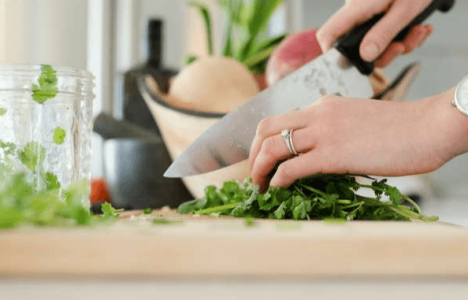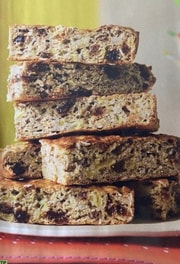Slash your grocery bill and cut kitchen waste with these six food tips
- Replies 2
Let's face it: grocery bills are a big part of our monthly spending, and we're all looking for ways to trim a few dollars from our budget.
But did you know that Aussies are collectively 'wasting' $36.6 billion worth of food a year?
That's a whopping 7.6 million tonnes of food thrown in the bin annually, or about 312 kilograms per person, and that kind of wastage comes with a big financial cost. According to research, each household can lose up to a staggering $2,700 a year just from not using food effectively.
But here at Seniors Discount Club, we say it's time to end that wastage—and why not start now? By incorporating these six simple and savvy food tips into your everyday kitchen routine, you can help cut your grocery bill and food waste significantly.
Here's how:

Make an 'eat first' section
First, designate a special space in your fridge and pantry for items close to expiry. It could be a basket, a container, or whatever catches your eye—as long as it's doing its job in helping you remember to use the items you have so they don't accidentally get overlooked and thrown away.
Two or three times a week, take stock of this 'eat-first' section and fill it up again if you need to.
Consider bottom-mount fridges
Are you in the market for a new fridge? Pay special attention to bottom-mount fridges, as the investment now will pay off in the long run. With fresh food stored in the top section and frozen items in the bottom, you can easily see and manage the contents of your fridge.
Plus, since frozen items can stay longer, you don't have to worry about spending too much time in a half-crouching position to track what's in there.
Use your freezer more
Are you underutilising your freezer? It's an awesome asset in your kitchen! It provides space to preserve food for future meals and can help you save time with frozen veggies and batches of preserved meals to avoid pressure points in your schedule.
Food seal clips
If you don't already own some, go and pick up a few food seal clips—like these ones from Kmart and Target—right away! They are a small and inexpensive purchase but will keep your food fresh and extend its shelf life so much longer. Plus, you won't have to worry about food going off, and you can go about your day knowing your food is properly sealed.
Use-by dates vs. best-before dates
It's also important to understand the difference between use-by and best-before dates. Make sure you know what each stamp means on the packaging. Use-by dates are there for safety, whereas best-before dates are more of an indicator. Food products with use-by dates cannot be consumed past the indicated date, while those with best-before dates suggest they can still be eaten after but at the expense of quality.
Make do with what you have
Finally, challenge yourself to dig deep into your pantry or fridge and create recipes using ingredients you already have at home. Take it as an opportunity to be creative in the kitchen, and who knows, you might find a delicious new meal to add to your repertoire.
If you make a mistake along the way (and let's be honest, who doesn't?), it'll be a fun experience—and hey, at least you're learning in the process!

These six simple food tips are an excellent start to reducing your kitchen waste and lowering your bills. With a bit of practice and experimentation, you could easily cut a significant chunk off your grocery spending–that's music to everyone's ears!
Members, if you would like to read more about this topic, please checkout member Denisse's article: Smart Solutions for Food Waste: Reduction and Proper Disposal.
What do you think, members? Do you have more tips and tricks to add to the list? Feel free to leave them in the comments below!
But did you know that Aussies are collectively 'wasting' $36.6 billion worth of food a year?
That's a whopping 7.6 million tonnes of food thrown in the bin annually, or about 312 kilograms per person, and that kind of wastage comes with a big financial cost. According to research, each household can lose up to a staggering $2,700 a year just from not using food effectively.
But here at Seniors Discount Club, we say it's time to end that wastage—and why not start now? By incorporating these six simple and savvy food tips into your everyday kitchen routine, you can help cut your grocery bill and food waste significantly.
Here's how:

Australians waste 7.6 million tonnes of food annually, which equals about 312 kilograms per person. Credit: Unsplash.
Make an 'eat first' section
First, designate a special space in your fridge and pantry for items close to expiry. It could be a basket, a container, or whatever catches your eye—as long as it's doing its job in helping you remember to use the items you have so they don't accidentally get overlooked and thrown away.
Two or three times a week, take stock of this 'eat-first' section and fill it up again if you need to.
Consider bottom-mount fridges
Are you in the market for a new fridge? Pay special attention to bottom-mount fridges, as the investment now will pay off in the long run. With fresh food stored in the top section and frozen items in the bottom, you can easily see and manage the contents of your fridge.
Plus, since frozen items can stay longer, you don't have to worry about spending too much time in a half-crouching position to track what's in there.
Use your freezer more
Are you underutilising your freezer? It's an awesome asset in your kitchen! It provides space to preserve food for future meals and can help you save time with frozen veggies and batches of preserved meals to avoid pressure points in your schedule.
Food seal clips
If you don't already own some, go and pick up a few food seal clips—like these ones from Kmart and Target—right away! They are a small and inexpensive purchase but will keep your food fresh and extend its shelf life so much longer. Plus, you won't have to worry about food going off, and you can go about your day knowing your food is properly sealed.
Use-by dates vs. best-before dates
It's also important to understand the difference between use-by and best-before dates. Make sure you know what each stamp means on the packaging. Use-by dates are there for safety, whereas best-before dates are more of an indicator. Food products with use-by dates cannot be consumed past the indicated date, while those with best-before dates suggest they can still be eaten after but at the expense of quality.
Make do with what you have
Finally, challenge yourself to dig deep into your pantry or fridge and create recipes using ingredients you already have at home. Take it as an opportunity to be creative in the kitchen, and who knows, you might find a delicious new meal to add to your repertoire.
If you make a mistake along the way (and let's be honest, who doesn't?), it'll be a fun experience—and hey, at least you're learning in the process!
Key Takeaways
- Australians waste 7.6 million tonnes of food every year, equating to a loss of up to $2700 per household annually.
- You can reduce food and money waste by setting up an 'eat first' section in your fridge and pantry, buying a bottom mount fridge, using your freezer more effectively, and buying food seal clips.
- Understanding the difference between use-by and best-before dates can help you consume food safely and reduce waste.
- Cooking more often with what's already at home and avoiding the temptation of buying new groceries can also reduce waste.
These six simple food tips are an excellent start to reducing your kitchen waste and lowering your bills. With a bit of practice and experimentation, you could easily cut a significant chunk off your grocery spending–that's music to everyone's ears!
Members, if you would like to read more about this topic, please checkout member Denisse's article: Smart Solutions for Food Waste: Reduction and Proper Disposal.
What do you think, members? Do you have more tips and tricks to add to the list? Feel free to leave them in the comments below!
Last edited by a moderator:







